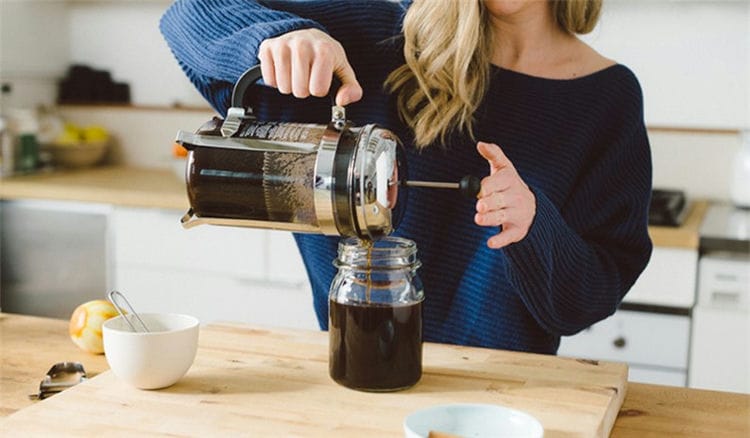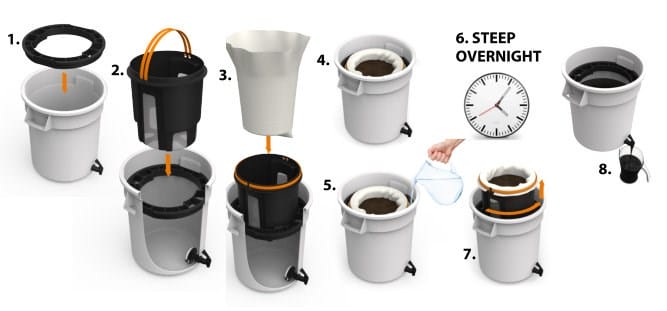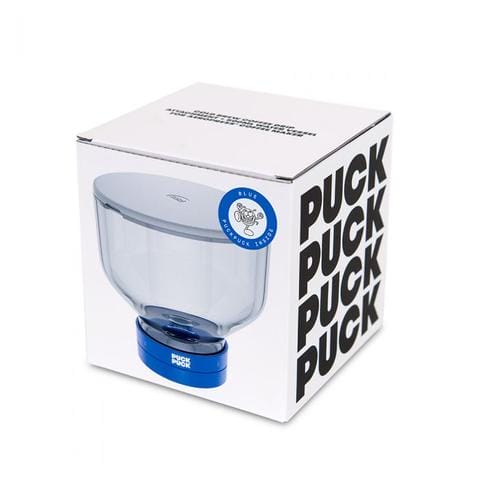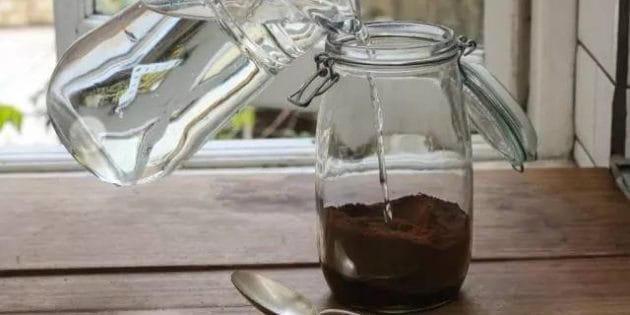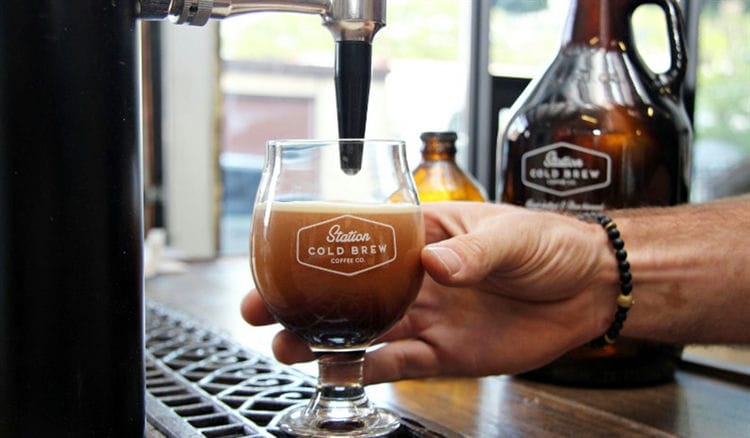What is cold bru and what is it eaten with. Cold Bru in a coffee shop: recipe, menu entry, cooking errors
The history of the appearance of cold bru
There are two main versions of creation.
According to historians, the original cold brue recipe was invented by Dutch traders back in the 16th century. He helped them transport the finished drink. However, the records of this are poorly preserved. The first quality records of the preparation of cold coffee are found in the Japanese city of Kyoto. From them it became known that the Japanese brewed cold brew as early as the 17th century. Moreover, it is exactly the recipe with which coffee is prepared now: cold water was dripped through ground coffee for a long time. Therefore, this coffee is sometimes called “Kyoto style coffee”.
With the advent of easier access to fire and the development of technology, cold brew has lost its popularity. Hot coffee came in its place.
Cold brew began to gain popularity again in the 60s of the last century, when Todd Simpson saw how Peruvians brew coffee using the cold method and then reheat it before serving. He noticed that the coffee was softer and less acidic, so he decided to come up with his own device for brewing coffee. This is how the Toddy cold coffee maker was born.
In the 70s, Japanese businessman Tadao Ueshima launched his line of canned coffee drink. His corporation Ueshima Coffee Co took a lot of effort, time and money to market the new product, because the Japanese did not want to drink ready-made coffee in cans. Ten years later, in the late 1970s, canned coffee took root and became a consumer product in Japan.
Cold brew has become really popular over the past ten years with the beginning of the third coffee wave. It is now mass-produced by illy and Starbucks, and locally by many small and medium-sized coffee shops.
What is cold brue?
Cold brew is not a cocktail or a coffee-containing drink, but real coffee prepared using a special technology. Unlike the usual espresso or Turkish coffee, cold brew is prepared in cold water. The cooking method is also different. This is not the usual heating, but infusion.
The name “cold bru” indicates the cooking method. It translates from English as “cold brewing”.
The recipe gained worldwide popularity several years ago, however, it has been well known for more than half a century.
- Some attribute the authorship to the Dutch. From Holland, the idea spread to Japan. The inhabitants of the Land of the Rising Sun, indeed, have been making and selling cold canned coffee for many years in a row.
- Some researchers believe that the technology was invented by Todd Simpson, a genetic engineer. He began to infuse ground coffee on cold water during his expedition to Latin America. After the return of the scientist, the idea acquired a technical embodiment in the form of an apparatus for making cold brus. On the basis of the Simpson method, modern devices for the preparation of cold brue function.
These two versions are the most popular, but who can guarantee that no one else had the idea of insisting coffee in cold water much earlier?
Whoever was the author of the invention, it received a rebirth after 2002, when there was a surge of interest in the world coffee industry in high-quality coffee and unique recipes. Experts call this period the “third coffee wave”, during which many recipes and technologies were rethought, including cold bru.
Today, coffee equipment manufacturers are actively producing devices for making cold brushes at home and in a coffee shop. For example, the Brewista system allows you to get about 23 liters of cold brew coffee at once, which is very convenient for coffee shops or bars.
What is the difference between cold brus and soft coffee drinks
The most popular in this coffee genre are iced coffee and ice coffee. For those who cannot do without their favorite drink on hot summer days, they have become an excellent alternative to hot espresso.
Prepare cold coffee without further ado. First, it is brewed in a coffee machine, a Turk, and brewed in a French press. The drink should be of increased concentration, taking into account the fact that it will be in contact with melting ice. The cooled strong coffee is poured into a tall glass and ice is added in the form of cubes or crushed. Ice cakes reduce the concentration of the drink and prevent it from getting warm. Chilled natural product wonderfully refreshes and tones up.
Ice-coffee made using the same technology is added with ice cream, syrups, cream, milk. It turns out a delicious and healthy cocktail that delights in a summer day. But a person devoted to the art of coffee will never give preference to it if there is a choice: ice coffee or cold blue? Of course cold brew!
Let’s justify this choice:
- Prepared by the method of long-term filtration, cold brew coffee conquers with its density and richness of taste.
- The drink lacks bitterness and acidity, there is balance and harmony.
- The aroma of coffee beans is revealed in all its glory, without hiding its subtlety and sophistication.
- Prolonged contact of coffee with cold water greatly reduces its acidity, so this type of drink is not contraindicated for people with stomach diseases.
- Thanks to the long extraction process, a strong coffee is obtained that invigorates as much as hot coffee.
- High-quality coffee single varieties reveal their merits, water takes all facets of taste and aroma from the beans.
How to cook cold brew at home
Ingredients:
- grain coffee (100% arabica);
- coffee grinder;
- pure water;
- the spoon;
- a French press or any glass container of a suitable volume.
Ingredient dosage
The choice of the number of ingredients for cold brue depends on how strong it is planned to be obtained:
- For a drink that can be consumed without diluting, take 10 grams of ground coffee per 100 ml of water.
- To get a very rich coffee (you can drink it right away or, if you wish, dilute it) – 15 grams of crushed beans per 100 ml of water.
- From 20 – 25 grams of ground coffee per 100 ml of water, a drink is obtained – a concentrate.
For cold brewing, medium-ground coffee is better, because the drink should not contain thicknesses, and it is difficult to get rid of small particles. The coarser the grind, the longer it takes to infuse.
Cooking technology
- Grind the coffee (you can use pre-ground coffee).
- Pour ground grains on the bottom of a French press (or other container) and fill it with water. It can be either chilled or at room temperature.
- Mix the ingredients thoroughly.
- Close the vessel and let the drink brew for 12 to 24 hours. There is a debate about how best to brew: in the refrigerator or under room conditions. Obviously, at a temperature of 20 – 25 degrees, the process will go faster. If the container is placed in the refrigerator, then it will take at least a day to insist, but many people like this coffee more.
- At the end of brewing, lower the piston of the French press until it is thick, but do not press on it. If brewing was in a different container, then the product must be passed through a sieve.
- To remove leftover beans, strain the drink through a moistened paper filter or muslin cloth. Repeat the procedure 2-3 times until the liquid is clear of all visible particles.
The finished product can be stored in the refrigerator for 1-2 weeks.
Many home appliance manufacturers have launched devices that help prepare coffee using the cold drip method at home. Their use somewhat simplifies the process, and its duration is reduced several times.
“3 years ago, the guests were not ready for a clean cold bru”
|
“In the summer of 2015, we introduced a clean cold brue to the menu for the first time in Ethiopia, Suke Kuto Hani. Unfortunately, not all the guests understood the pure cold bru, so it was often just lying in the window. Two weeks later, we wrote off it according to the expiration date. Most likely, the guests were simply not ready for pure black coffee. Cappuccino, latte, raff were the best sellers, less than 5% of guests ordered an alternative, and we had not yet introduced filter coffee. Therefore, we decided to change the recipe and began to add additives to pure cold brue – homemade sauces that accentuated the grain descriptors. For example, if in Kenya AA Highlands Nut had a pronounced pineapple descriptor, then we added pineapple sauce to emphasize it. “ |
Characteristics of cold bru coffee
| Grain varieties | 100% Arabica |
| Roast degree | Light to dark, medium preferred |
| Pomol | Medium to coarse – for infusion in a jar or French press;
medium to medium coarse – for brewing in a special coffee maker. |
| Water temperature | For infusion – from +15 to +25 ° C, bottled water does not need to be specially heated or cooled.
For cooking in teapots, sometimes colder water or ice is used. |
| Finished coffee temperature | +10 to +25 ° C, but can be additionally cooled |
| Cooking time | 12-24 hours with infusion;
3–6 hours – if made in a coffee maker. |
| Caffeine content (strength) | 150 mg in 100 ml, with a proportion of 15 g of coffee per 100 ml of water; |
| Recommended allowance (servings per day) | 1-2 (if the portion is 50-60 ml, and the coffee is not too strong) |
| Maximum allowable rate (servings per day) | 3 (the total amount of caffeine must not exceed 500 mg) |
| Calorie content | 6-10 kcal per 100 ml |
| Calorie content with sugar | 26.35-29.35 kcal – 100 ml of coffee with 5 g of sugar (1 sticker) |
It should be borne in mind that due to long-term extraction, cold brus contains no less, and sometimes even more, caffeine than espresso. Therefore, you cannot abuse the drink.
Corn
I prefer light roasted coffees (our group D), so I haven’t even tried brewing coldbrew with darker beans. The coffee is soft, very sweet and not too acidic, but retains the flavor and aroma of the terroir.
I recommend trying to make coldbrew on the bright Kenya Gicherori AA or the “universal” Uganda Sipi Falls (this coffee is most often chosen by coffee shops for cold drinks).
Water
Use your favorite coffee water – bottled or filtered. For coldbrew, water at room temperature, about 20 degrees, is suitable. And if you want to make coffee even sweeter, try pre-soaking with hot water: heat the water to 95 degrees, pour ground coffee in a ratio of 1: 3 (water should be three times more by weight than coffee), stir and wait for about a minute, then add cold water to the required amount.
Add sauces and bottling
Ingredients:
- Pure cold bru – 280 g.
- Orange Blossom syrup prepared in a coffee shop – 2 g.
- Jasmine Flowers syrup prepared in a coffee shop – 4 g.
- Apricot syrup prepared in a coffee shop – 20 g.
- Citric acid – 0.2 g.
Preparation:
Measure each ingredient in a separate container, then mix thoroughly in a common container. Pour into a bottle.
Hot bloom cold trousers
In order for the extraction to be more uniform, the coffee poured into the teapot is moistened with water at a temperature of about + 70 ° C. They begin to dig in the thick in a minute, when carbon dioxide comes out of it.
How to serve and drink cold brue
Cold Bru is served in glass goblets. If sugar has not been dissolved in a cold drink in advance, it will be difficult for the guest to do this. Therefore, cold bru can be sweetened with syrup or liqueur.
The drink goes well with fruits, berry desserts, whipped cream, ice cream.
Cold Bru recipe: how to cook at home
If you are not planning on making cold bru in industrial quantities, then the trendy drink can be prepared at home. There are several cooking methods.
In the French press
You will need about 150 g of coarse coffee and 1 liter of water at room temperature. The better the water quality, the tastier the coffee, so you shouldn’t save on water. Pour freshly ground coffee with water and, without lowering the press, insist for 8 -12 hours. Then lower the press to separate the grounds. The coffee is ready and ready to drink.
In a jug
The proportion of ingredients is the same. Pour coffee with water and let it brew for 8-12 hours. Then strain through a fine sieve, and then a second time through a paper filter. The coffee is ready.
In a plastic bottle (travel option)
Pour ground coffee into a plastic bottle and pour cold water. Leave on for 8-10 hours. You can pour coffee from a bottle through several layers of a fabric filter made of natural pure material: cotton, chintz, gauze.
There are industrial devices for making coffee using the cold infusion method.
To prepare cold brus, it is better to take medium-ground coffee, it is difficult to get rid of small particles, and cold brus does not imply the presence of thick in the drink.
Common mistakes when making cold brew
In our case, making cold brew is an immersion way of brewing coffee. Accurate adherence to the recipe will help to avoid cooking errors:
-
Failure to comply with the extraction time. According to our recipe, the brewing time is 8 hours. The evening shift put a blank overnight, and the morning shift immediately had to filter cold brushes. It is important not to forget to stop the extraction in time, otherwise the taste will be significantly different.
-
Non-observance of proportions. It is important to weigh each ingredient in a separate container, and only then mix. It is also important to closely monitor the weight of the citric acid. Lack of professional scales or haste can lead to an incorrect ratio of proportions and, as a result, a watery and mild taste, imbalance, and bitterness.
-
Poor filtration. The overall impression of the drink is influenced by the tactile sensations. In order for the consistency of cold bru to be smooth and syrupy, it is important to provide several degrees of coffee purification from sediments of different fractions.
As with any other coffee, it is important to pay attention to the grind size, water mineralization, non-observance of temperature conditions, and much more. 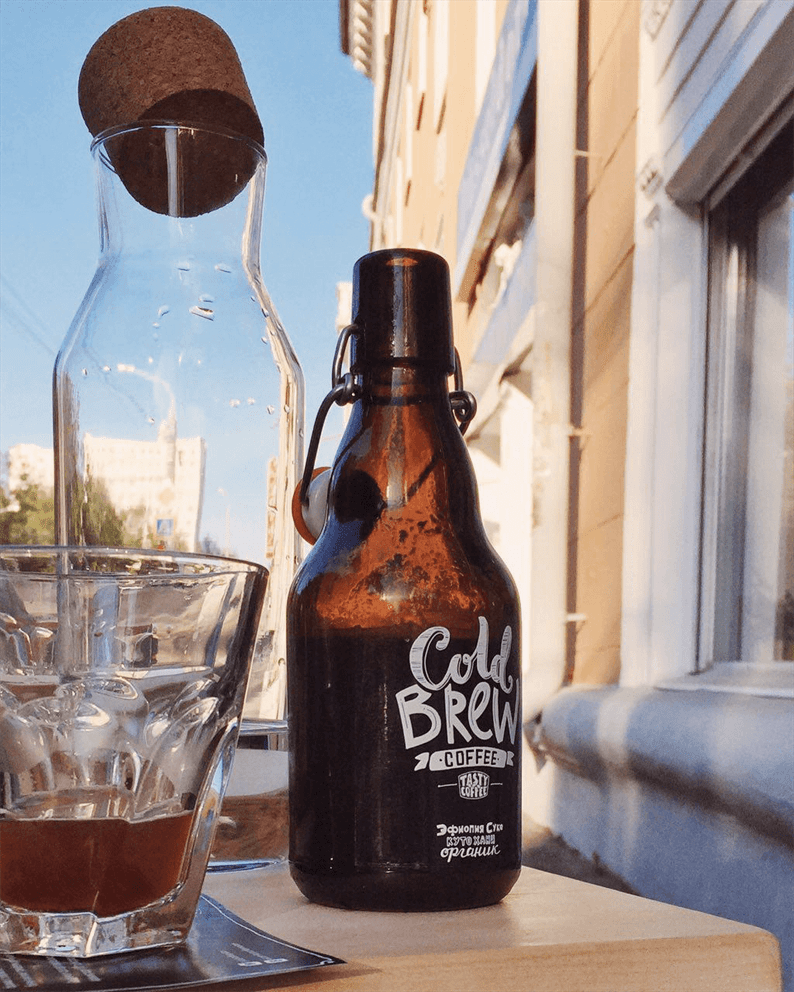
The subtleties of cooking coldbrew:
It would seem that it could be easier to prepare such a drink. However, there are nuances and subtleties here. Let’s figure it out.
1 Do not use beans that are too fresh for coldbrew – ideally, the beans should be roasted 2-6 weeks ago.
2 Select the grind carefully. Using too fine a grind shines your drink with excessive extraction, that is, excessive strength and bitterness in the taste. Depending on the infusion time, the grind varies from coarse to coarse (very coarse).
3 Observe the optimal ratio of coffee and water. The basic formula for all coffee brewing methods is 65–70 g of beans per 1 liter of water. When forming your own Coldbrew recipe, you should also build on these indicators.
4 Don’t worry about the temperature of the water. Is it hard to believe that coffee can be brewed with cold water? Do not hesitate or think that cooling coffee made in a V60 or Aeropress will give you a coldbrew taste. These methods have different chemical compositions.
5 Watch the expiration date. Coldbrew should only be stored in the refrigerator. Then it will be usable within 1–2 weeks, although its flavor and aroma properties will become less intense after the first week. But if you suddenly decide to dilute it with water, then the shelf life of the drink is reduced to 2-3 days.
Direct cooling
Let’s consolidate one point: we get a delicious cold drink called Cold Brew, only after we dilute the concentrate with the necessary amount of water. Does this bother you? Why make an extract and dilute it when you can simply prepare an alternative to your taste and refrigerate. Yes, you can do that, but I will say one thing: if it gave such an excellent result, then coffee enthusiasts would not have to invent and use something more technological.
Chilled during the brewing process is also considered cold bru. You just need to add ice to the technology for preparing an alternative method. Example:
- spill a funnel (or something similar in the type of extraction) into a server half filled with ice cubes;
- use ice water during bypass when diluting the aeropress concentrate.
Unfortunately, direct cooling cannot be done with all alternative brewing methods. Most often, amateurs buy special servers and flasks with built-in ice compartments (the most popular of them are presented by the manufacturer hario). They are made so that the frozen water in the cubes does not get into the black coffee you have made, but only cools it.
Are you not satisfied with the taste? It is not expressive enough and seems dull – add a little (5-10 grams) lime juice to increase the acidity. If you want to add sweetness to your coffee drink, you can safely add a small portion of juice to your taste (in a ratio of 1:10). Although this will no longer be considered the original cold brew, I am sure that this cold drink will turn out to be great. Do you like to drink iced coffee with milk?
Cold Bru – the most popular cold coffee
Why do you think cold brew has become so much more popular than conventional refrigerated counterparts?
The fact is that the preparation of cold brew allows you to extract completely different flavoring components than with the traditional hot method. Many different Cold Brew recipes are now common. Most of them are based on the traditional method of filtration, in which the finished drink is slowly filtered through a paper, metal or rag filter into a separate vessel under the influence of gravity. Filtration of such coffee takes at least 12 hours. As you already know, the level of extraction directly depends on the cooking temperature: the lower it is, the less energy is released in the process and the slower the processes of extracting flavoring and aromatic substances occur.
This is a more professional approach to business, which requires not only a refined recipe, but also compliance with all conditions in which your future drink will be extracted. Usually, special kits are used for this method, such as: Brewista Cold Pro or TODDY. They are a small plastic bucket with several sections and their own filter system.
If you are an ardent fan of “alternative” and Alan Adler’s invention lies somewhere at home, you can adapt your aeropress for making cold brues by purchasing a special accessory called PUCK PUCK. With it, the aeropress turns into a cold-drip structure for preparing a cold extract.
What distinguishes slow drip extraction from immersion extraction:
For starters, it’s diversity. We can use drip extraction with hot water and further cooling, or completely cold brewing.
- the process of blooming (flowering) or pre-wetting coffee takes place using hot water. And this is done in order to get rid of unwanted carbon dioxide, but, most importantly, it guarantees that the drink will turn out strong and rich with all the shades of terroir. After that, cold water is used and all other processes are not so active, but, most often, this brings excellent results.
- cold brew cooked under pressure has a longer shelf life compared to the first methods. This extract can be stored for up to 3 days, unlike a cold drink brewed by the immersion method, while retaining the aroma due to more efficient extraction of soluble compounds, and the absence of oxygen prevents adverse oxidation.
Difficulties in cooking
It is not so easy to brew delicious coffee using the cold method. First you need to choose good raw materials. This requirement applies to all brewing methods, but when the coffee powder is brewed, brewed, or steamed, the taste imperfections are slightly leveled. There are no high temperatures here, so the quality of the coffee beans is of paramount importance. Only 100% Arabica is suitable for a classic drink.
The taste of the water is very important. Filtered water will work, but boiled and then chilled water is the best option.
The cold infusion process is very long and can take from 8 to 24 hours. In a specialized coffee maker, the drink is prepared within 3 – 6 hours.
Extraction time
At room temperature, extraction is faster than in a refrigerator, but in any case, it takes hours. The optimal time for brewing coldbrews is 12-18 hours, the longer the coffee is brewed, the richer it will be. Be guided by your taste: if the drink seems undersaturated and lacks sweetness, you can leave it to brew for two to three hours longer.
Since making coldbrews takes time, it can take days to find the perfect recipe. In order to find “the same taste” faster, it is better to brew several drinks at once – in different devices, on different grains, with different dosages, with or without hot pre-wetting, for different times
You will need:
- coffee grinder and coffee beans or coarse ground coffee;
- sieve;
- muslin cloth or paper towels;
- two containers of large volume (one of them with a lid).
Coffee grinding
If you are not using ground coffee, run the beans through the grinder. Make sure to select the appropriate grind: the ground coffee particles should be similar in size to bread crumbs. By using smaller particles, you run the risk of a cloudy drink.
Coffee lovers recommend not to follow the path of least resistance and grind the beans fried for espresso with your own hands: this way the drink will turn out to be more delicious.
Infusion
Fill a large can of coffee and cold water in proportions 1: 8. If you plan to drink cold bru with ice, then the proportions should be changed to 1: 4. Stir well, cover and place the can in the refrigerator. If you used a ratio of 1: 8, then the waiting time will be 18-24 hours. If 1: 4, then 10-12 hours will be enough.
Filtration
Strain the drink through a sieve, get rid of large particles of coffee. Place a muslin cloth or some paper towels on a clean sieve and strain the coffee again. Repeat the procedure 2-3 times until no visible particles remain at the bottom of the can. If you are unable to bring the drink to this purity, then you have used coffee that is too finely ground.
Innings
Cold Bru is ready. Ice, milk, cream, cherry juice or various syrups can be added to the drink.
Features of taste
Cold-prepared coffee tastes differently from other types of this drink. Due to the low temperature and prolonged infusion, caffeine is actively released into the water, while chlorogenic acid and tannins are extracted relatively little. Therefore cold bru has a milder taste. There is almost no sourness in it, and the characteristic coffee bitterness is felt much weaker. But this does not affect the caffeine content in any way – there is more of it than in espresso – from 150 mg of caffeine per 100 ml of liquid.
Honore de Balzac, who periodically spent several days in a row without sleep, came to the conclusion that it is coffee brewed in a cold way that invigorates the best.
Due to its low acidity, cold brus is easier for the stomach than hot coffee. It is allowed to be consumed even by people suffering from diseases of the digestive system.
Sources used and useful links on the topic: https://shop.tastycoffee.ru/blog/cold-brew-coffee https://kofella.net/vse-o-kofe/kofe-kold-bryu.html https: // cofenator.ru/recept/kold-bryu-retsept.html https://mycoffe.ru/recepty-kofe/kofe-kold-bryu.html https://shop.tastycoffee.ru/blog/cold-brew-recepti https: //coffeefan.info/kofejnyj-napitok-kold-bryu.html https://www.TorreFacto.ru/blog/cold-brew-secret/ https://zen.yandex.ru/media/coffeefan/kofe- kold-briu-cold-brew-5cef8e67e53c7200af47ed5b https://rba-org.ru/2019/05/13/chto-takoe-koldbryu-i-kak-ego-prigotovit-doma/ https://rb.coffee/about / blog / cold-brew https://Lifehacker.ru/cold-brew/

